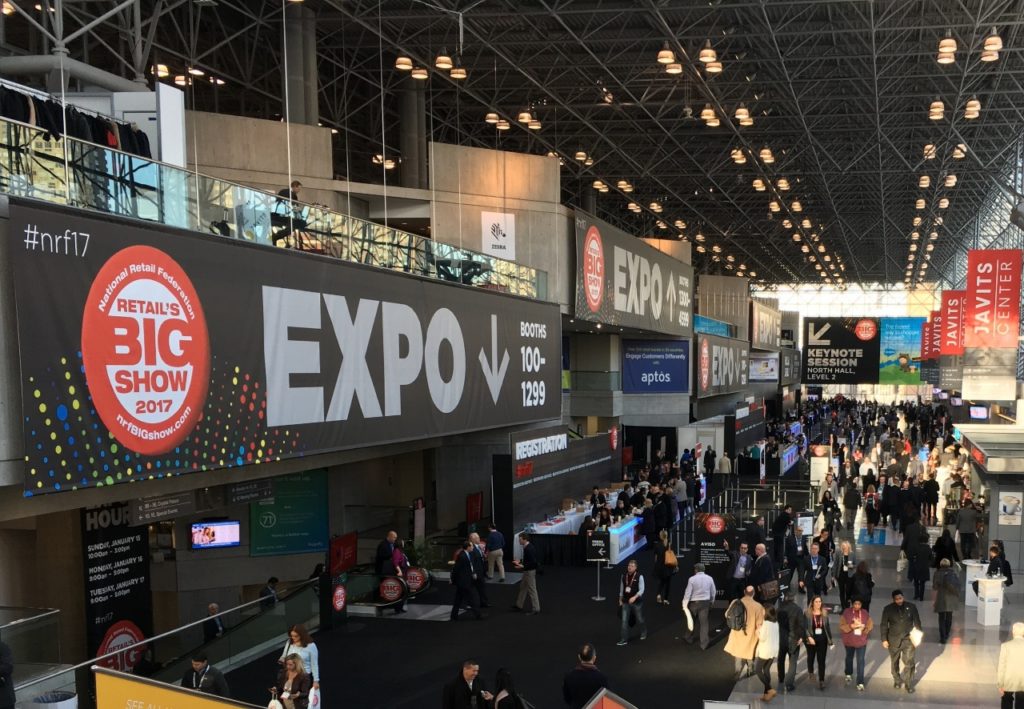NRF Retail’s BIG Show 2017 Recap – The Year of Disruption
The Jacob K. Javits Convention Center welcomed 35,000 attendees to National Retail Federation’s “BIG Show 2017” – the biggest retail convention of the year. As one of 35,000, I was excited to see what themes were top of mind for retailers and how this year’s themes evolved from previous years. After three days of walking the expo floor and hearing from great speakers, three concepts stand out at the forefront of my mind.

Personalization and customization are more than just a trend.
Throughout the week we were treated to success stories of personalization and customization. We heard about it from various angles, from personalized marketing to manufacturing completely customized products. In 2016, a key message at the Big Show was “use your big data platforms to optimize omnichannel.” In 2017, the message is “use your big data to optimize the customer experience.” This includes giving customers the right message, at the right time, in the right form, and for the right product. This includes a product that may not even exist yet! We heard from Indochino, who is looking to get lead time down from 3.8 weeks for order to delivery to 2 weeks in 2017. Shoes of Prey has shoes on Nordstrom’s website that do not exist yet. Consumers have longed for expressing their individual personalities for decades, and now the technology is finally in place for retailers to completely customize their own products. Retailers have a clear opportunity to create a differentiated customer experience through providing experiences and products that are unique to each individual customer, allowing one to promote their own ‘personal brand.’
Virtual Reality and Augmented Reality are no longer the future, they are the now.
I walked into the Javits’ center probably most excited to see the various virtual reality (VR) and augmented reality (AR) technologies, but skeptical that many of them could have an impact on retailers in the near future. What I learned is that it is no longer unrealistic to think that VR/AR technology can be incorporated in a retailer’s customer journey in the next 1-2 years. While VR still has some barriers to becoming widely used by consumers as a channel to shop from, primarily cost and availability, it can be used by retailers in other ways such as store design and predictive analytics. Augmented reality is even closer, as it can be integrated with native applications today and create unique experiences for customers who want to see products in their homes before they buy them. While retailers shouldn’t necessarily rush into implementing VR or AR tomorrow, I do think that we are now at a point where it’s worth investigating to see how it can enhance your customer experience. During the Intel session, we heard retailers can see a return of $16 for each $1 spent on VR. If the numbers hold up, why not look into it? To read more about VR resources, check out this post by Jenny McLean.
Retailers should be looking to create consistent experiences across channels.
The rise of omnichannel over the last few years has retailers thinking about their in-store and online experiences from the perspective of “how do we optimize where our product is” and making sure inventory supports customers regardless of where the order is placed. However, for too long retailers have disregarded that the overall experiences of the two channels can be completely different. The goal is to create an omniexperience, an authentic and consistent brand experience across all channels focused on your customer. Retailers are now thinking of new and exciting ways to incorporate the best aspects of online shopping into stores. Whether it be digital signage, interactive dressing room mirrors, or clienteling applications that allow associates to better serve customers. eCommerce is going to continue to grow, and brick and mortar is going to continue to evolve. Retailers that want to be in the front of the pack will not let eCommerce and brick and mortar happen in a silo, but will look to leverage best practices from one channel into the other. Rebecca and Uri Minkoff talked about their Store of the Future, a great example of this which other retailers can take a page from.
Some other quick thoughts:
- The word of the week was ‘disruption.’ The amount of sessions with ‘disruption’ in the title rivals such buzz-words like ‘omnichannel’ and ‘big data.’ It is clear that the industry is in state of continuous change, and retailers are getting creative trying to stay in front of their competitors.
- There were some great presentations on RFID, which continues to be an opportunity for retailers who want to improve their inventory accuracy, lessen out-of-stocks or missed omnichannel sales opportunities, and help loss prevention.
- The most attended session (by my eye) was easily the chat with Sir Richard Branson. One of his best messages – smaller companies can compete with the big guys by offering a better product and by being a little ‘cheeky’ when given the opportunity.
Thank you to the National Retail Federation for another year of a great event. If you have found this information valuable and would like to receive future insights about the retail industry, subscribe to our insights below.



